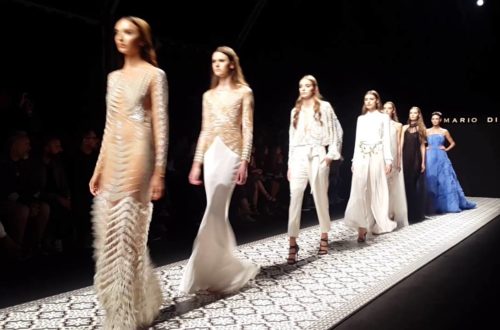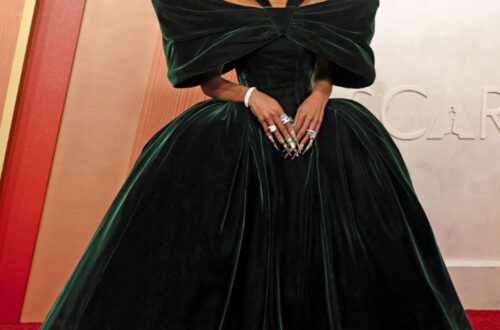There is a strong bond between Art and Fashion, often with one influencing the other. We frequently hear of designers, from top fashion houses, describing to us what influences them the most . For instance, for his debut Haute Couture Collection at Maison Dior, Raf Simons re-created amazing Sterling Ruby paintings into stunning women’s dresses.

On the other hand, we rarely hear about or observe contemporary artists speaking about the impact of fashion on their work. However, this is the case for Andy Warhol. Born and raised in Pittsburgh, Pennsylvania, Warhol moved to New York in 1949 at 20 years of age, immediately after finishing his Bachelor of Fine Arts in Pictorial Design, bringing with him only a bag full of dreams. Prior to becoming the leading figure of one of the most famous and debated artistic movements of the 20th Century, Pop Art, Warhol gained fame thanks to his ink drawings of shoe advertisements.
Hosted by the Maria Calderara Showroom in a small hidden courtyard in Via Lazzaretto in Milan, you will find the exhibition “ANDY WARHOL – Illustrations for Fashion Magazines, 1951-1963“. An incredible journey throughout the first years of Warhol’s career as an illustrator, which had great relevance in his process of artistic development.
“Fashion wasn’t what you wore someplace anymore; it was the whole reason for going“ – Andy Warhol
Warhol obtained his first professional job at Glamour Magazine in 1949, just a few months after his arrival in New York. His portfolio, in which he presented at the interview, immediately caught the attention of Tina Fredericks, who at the time was Glamour Magazine’s Art-Director. Recognizing his potential, Mrs Fredericks commissioned him for the magazine to illustrate shoes. When Warhol arrived to work the following day with his drawings of used and worn out shoes, he learnt his first very important lesson. Shoes are the object of desire for every woman, and must therefore be presented in a favourable light – clean, fresh and desirable. Shoes must appeal to women, in order for them to run out and buy a pair immediately. This was an essential rule of advertising in the industry, and one which Warhol learnt immediately.
“When I drew shoes for the magazines, I was paid for the number of shoes I drew, so I counted the shoes in order to know how much I would get paid”
Other Art-Directors came to learn of Warhol’s work and thoroughly appreciated his style of painting. He then later revealed his talent for drawing other accessories – handbags, jewelry, perfume bottles and sunglasses. His attention to details and his deep understanding of these objects, as independent visual entities, allowed him to turn accessories into desirable goods, those in which customers wanted to purchase. He took these objects out of their natural context, and represented them as self-sufficient products. In this way, Warhol elevated the objects of his representation by giving them a symbolic status.
Between 1954 and 1957, years of great success for Warhol, Esquire – a magazine tailored to men – commissioned him to illustrate the trends in male fashion and accessories at the time. For Esquire, Warhol displayed great flexibility, designing illustrations which were suitable and targeted the male audience. He did this by using cataloguing systems with drawings accompanied only by small amounts of specific information, and removing the use of males models. He simply represented clothes and accessories in black and white, with direct titles. Every number was a little collection placed on the page with great rigour.

In order to create many of his drawings, Warhol used a special type of line drawing called bottled-line technique – which is still today a distinguishing mark of the artists’ illustrations. He began experimenting with this technique while studying at the Carnegie Institute of Technology, but it was only in the 1950s that he perfected the technique. The result of this multi-step process is a dotted, broken and delicate line. This allowed Warhol to create elegant and sophisticated images, that he would often colour with light dyes. Reproducibility was the essential source of Warhol’s creativity, which is visible still today as he became the genius artist of the Pop Art Movement.

Between 1954 and 1961, Warhol’s work appeared sixty-nine times in Harper’s Bazar, the most prestigious fashion magazine, together with Vogue, for which he created extravagant and playful pages. In 1954, Warhol designed his first and only cover for the magazine. On it, a woman depicted wearing a long white dress, with four blue stars. Simple yet unmistakeable.
Below lays the power of his mark.

1962 was a crucial year for Warhol. The work he carried out for more than 10 years in the advertising industry was developed into art, earning him coverage in the most important and prestigious fashion magazines at the time. During this time, he began to use photo booths in order to obtain photographic strips of all the people he met. This was the beginning of the Pop Art era.
Pierandrea Miglietta




